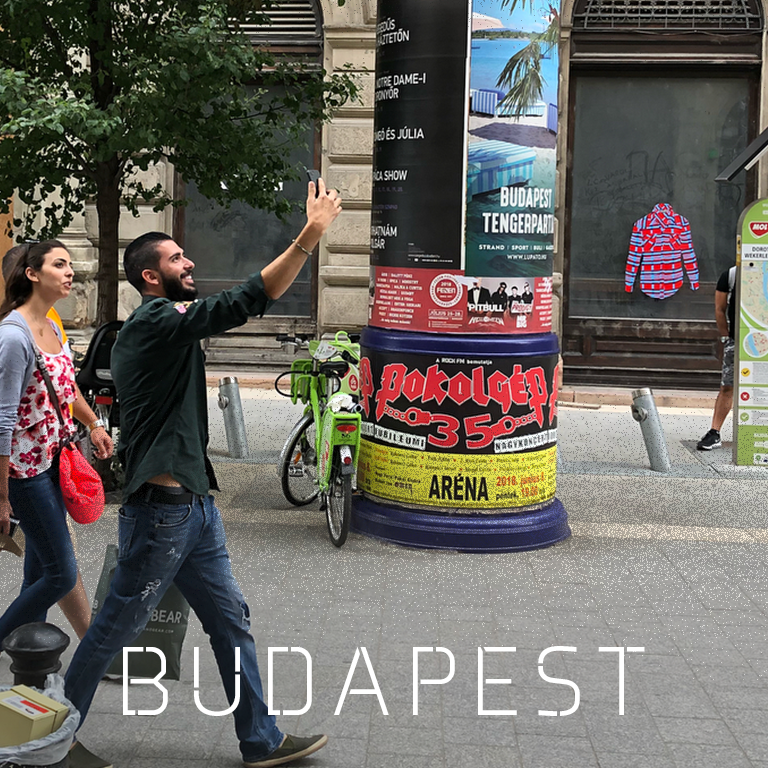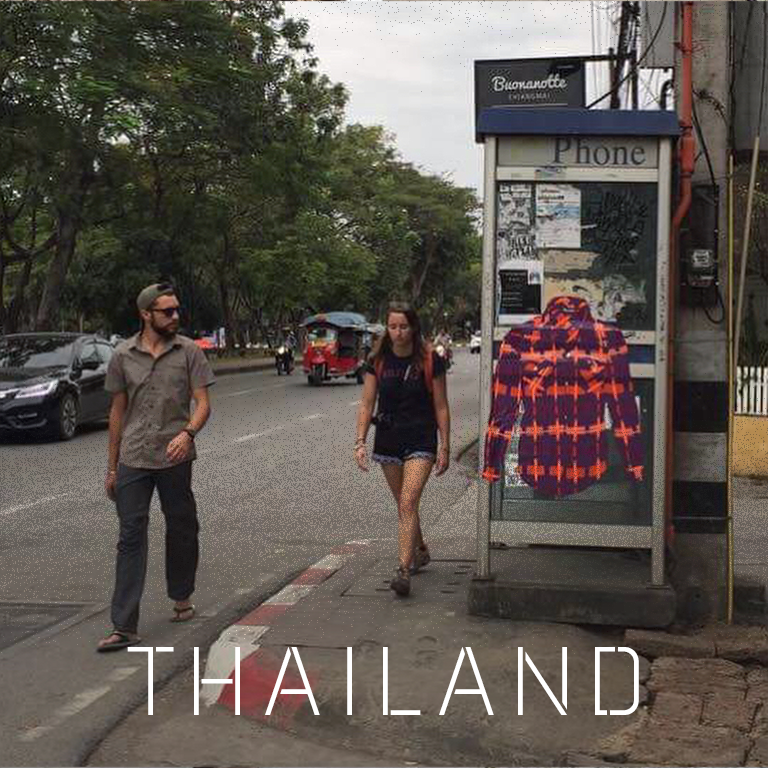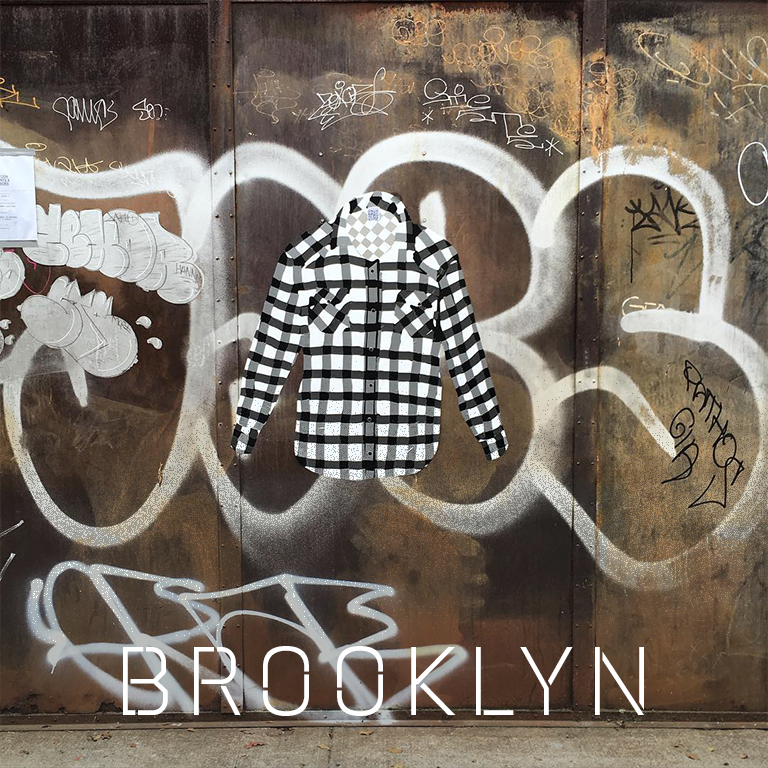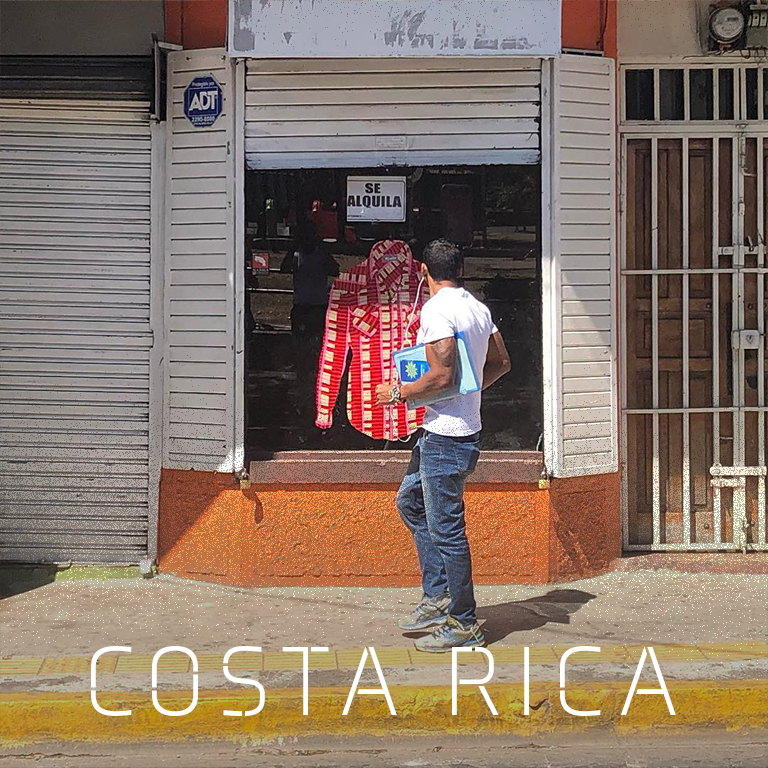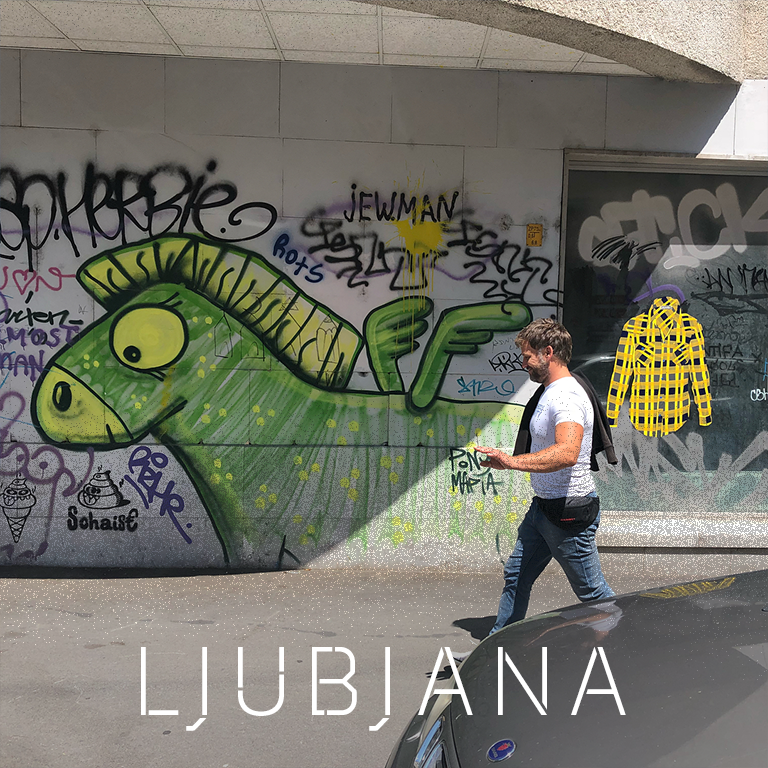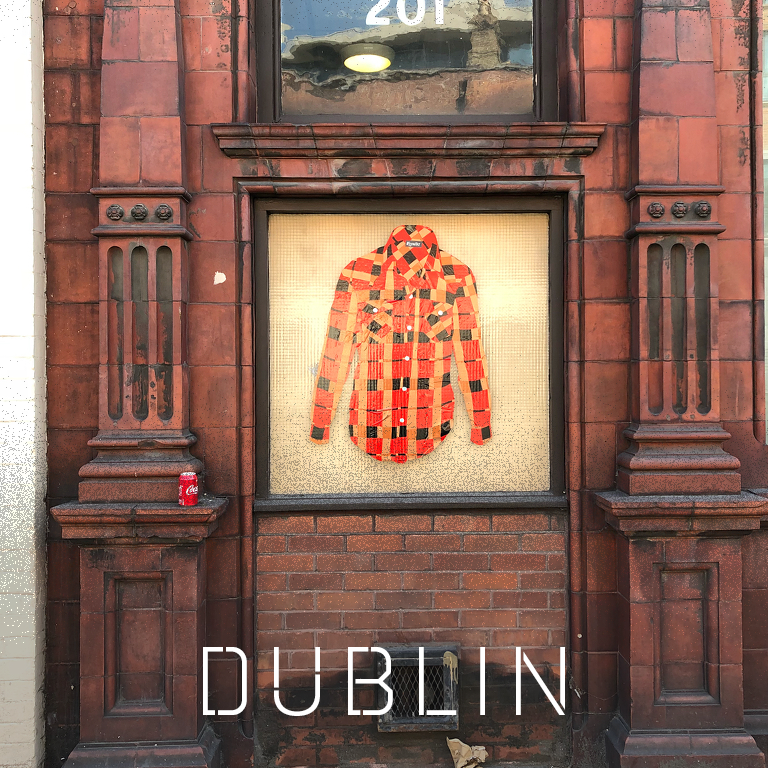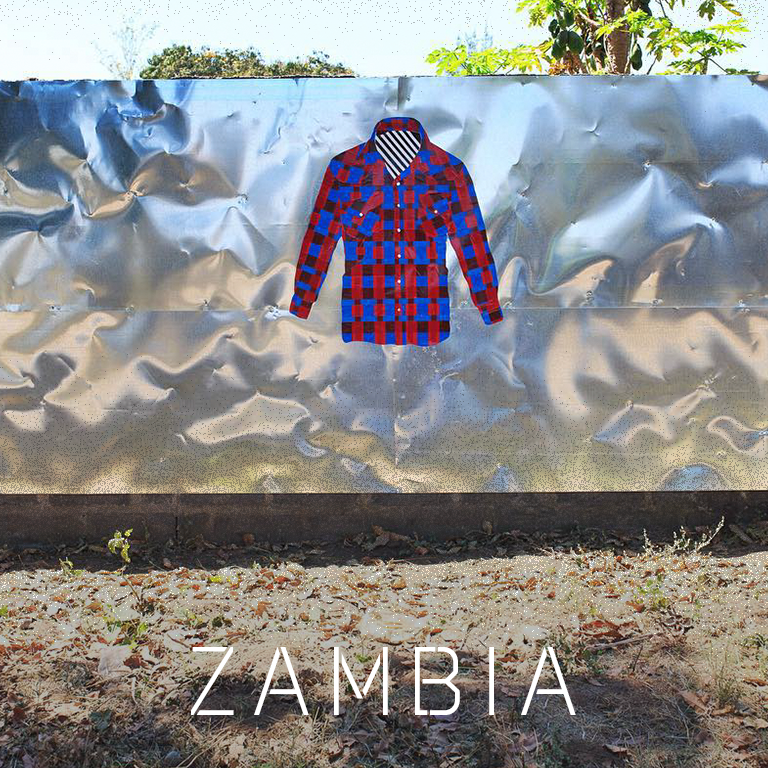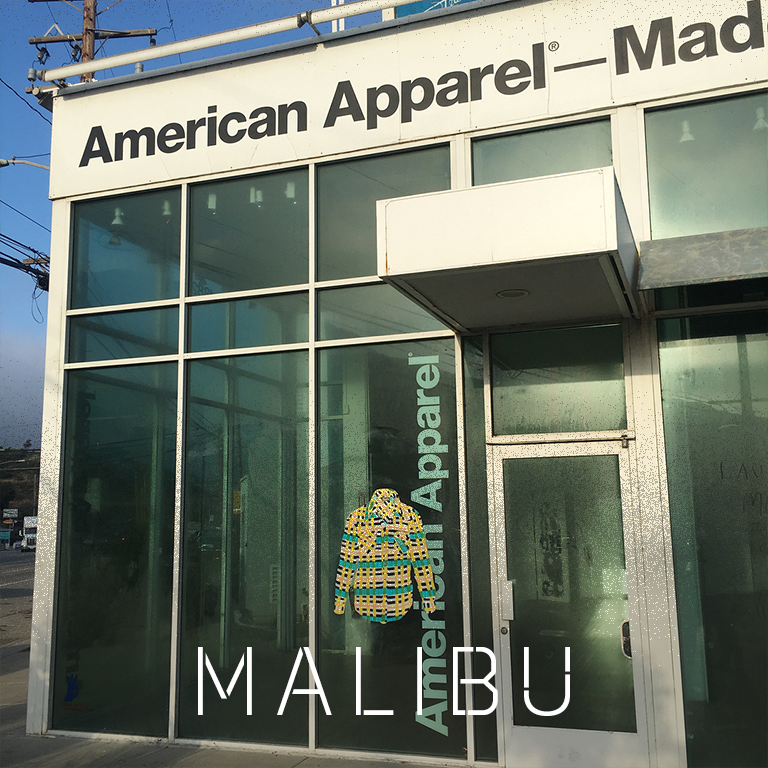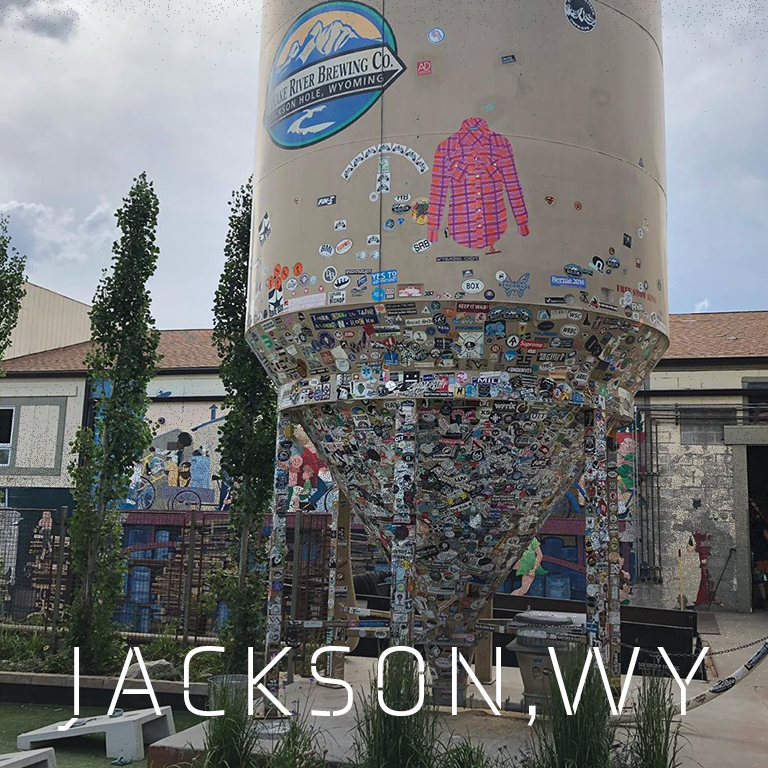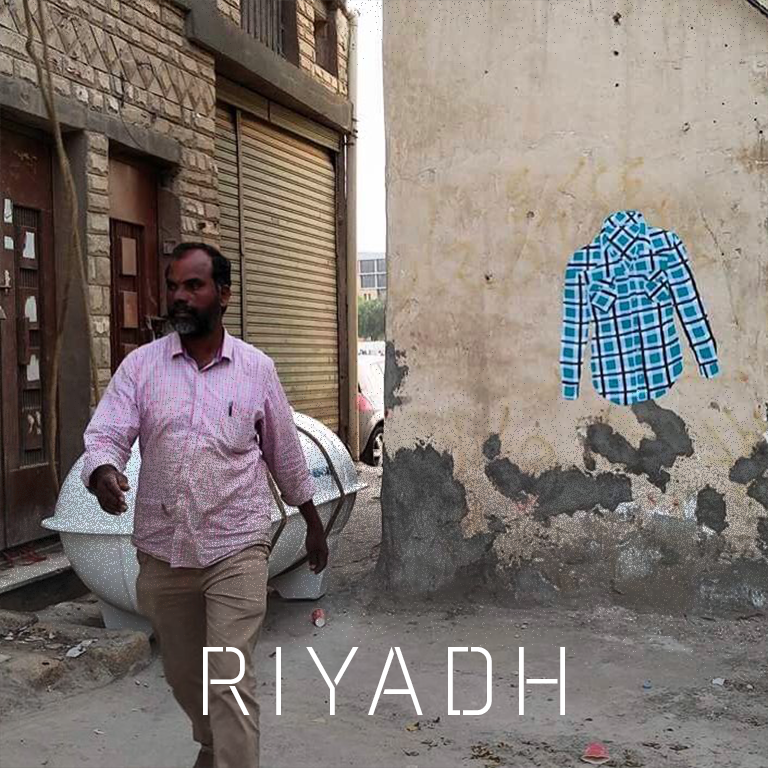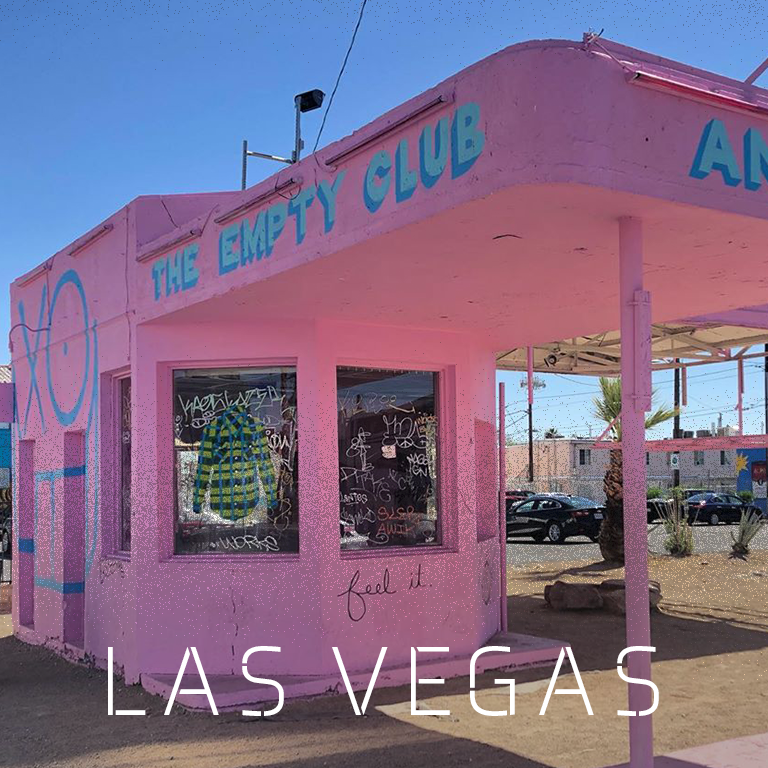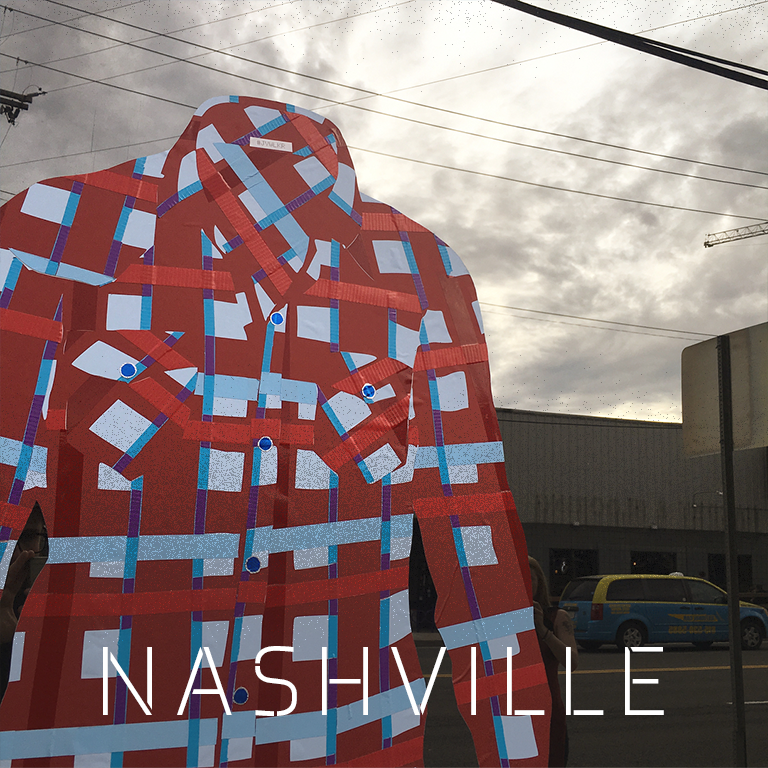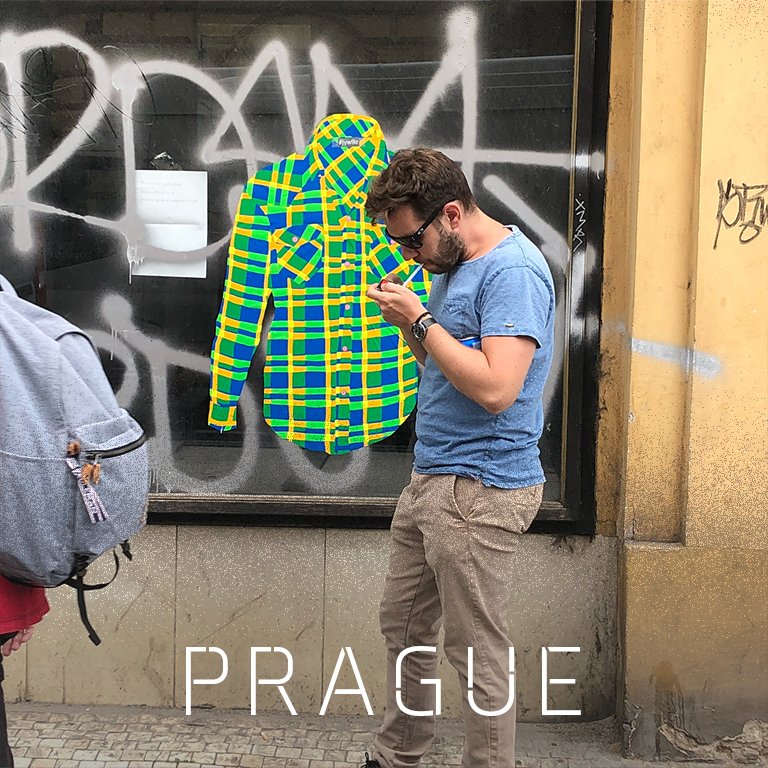PLAID SHIRT PROJECT
Jay Walker’s multi-year Plaid Shirt project is the artist’s first major street art series. Envisioned to function beyond the confines of the academy, studio, gallery, or museum, Walker’s adhesive tape-based series of large scale, disembodied button-down shirts built from layer upon layer of vibrantly colored vinyl tape strips has reached a global public audience. From Iceland in the north to Zambia in the south, and stretching from San Francisco to Portugal to Thailand, Walker’s Plaid Shirts have spontaneously appeared – sometimes with permission, and sometimes clandestinely – on shop windows, coffee houses, bars, and the exteriors of abandoned buildings. Cropping up unexpectedly in highly trafficked social spaces, Walker’s Plaid Shirts engage a broad public, who might not otherwise have the opportunity to encounter art, in an impromptu conversation. Each different shirt in its varied colors, shapes, and patterns creates a personal art experience for viewers from any number of cultures, heritages, environments, and socio-economic backgrounds. These shirts provide an opportunity for their audience to encounter something unexpected and respond to them on their own terms; to question where they came from, why they exist in this space, and what kind of role they play in their communities. (Continued Below)
To see Shirts in each location, navigate the map.
The Plaid Shirt project was born from Walker’s long-standing interests in pattern, color, and clothing. Clothing as subject matter became important to Walker when he was an MFA student at the Pennsylvania Academy of the Fine Arts (PAFA), the oldest art academy in the nation. At PAFA, drawing, painting, and sculpting the nude figure from life was traditionally held to be pinnacle of achievement ever since the institution’s founding in the early 19th century. Turning this long tradition on its head, Walker shifted his attention away from painting the human figure without clothing, to focus on painting clothing without the human figure. In a similar vein, Walker also challenged himself to leave behind the academic emphasis on naturalistic colorism and monochrome, and turn to intensely saturated, extreme color and dramatic contrast.
Walker’s interest in pattern, too, emerged while at PAFA. Taking a cue from one of his professors to “simply and amplify” the visual elements that were important to him as an artist, Walker isolated and enhanced his new interests in clothing as well as intense colorism, and applied them to the form of the plaid shirt as a way to explore pattern. Working with overlapping and interweaving lines specific to the plaid pattern allowed Walker to investigate the push and pull of color contrasts and observe how colors affect each other when they intersect.
Walker’s first explorations of disembodied patterned shirts in highly saturated colors and took the form of traditional painting and stain on wood panel, where he played the organically flowing natural wood grain against the crisp overlapping lines of the plaid patterning. He then began to build shirts by hand from vinyl tape as a means to push the limits of color intensity and interaction. Walker later fine-tuned his process to create his shirts digitally, starting with an adhesive vinyl sheet as a framework to outline the contours of the shirt before layering intersecting tape lines to create his pattern, paying careful attention to the laws of color theory when making his creative choices. Walker finally arrived at a formula for creating complete adhesive plaid shirts, each approximately 40”x38”, which could be easily transported and quickly installed on a non-porous surface, typically metal or glass. Originally conceived as a nationwide project, Walker placed his plaid shirts in over 40 states. Challenging himself to be thorough, Walker soon broadened the project beyond the U.S., recognizing that the plaid pattern is common in many cultures and would be familiar all over the globe. Traveling to many new nations to expand his project, and enlisting friends who were traveling in other directions to transport and install shirts that were pre-made in his studio, Walker’s Plaid Shirt project blossomed and flourished, reaching its height in 2017.
Each plaid shirt is Walker’s “gift” to the owner of the space where the shirt appears, as well as to the community who encounters it. Once installed, the shirts become part of the public space, and are open to any and every response that the public offers. These responses have varied widely. Crowds have gathered to watch Walker at work on his installations, often engaging the artist in conversation about the art and its context. Many have photographed the shirts and shared them on social media with the hashtag #jywlkr, which appears on each shirt resembling a typical clothing brand label inside the collar. Sometimes Walker has been interrupted during his work, as in Brooklyn’s Bushwick neighborhood where police prevented him from completing his installation. Other times, his shirts have been painted over, as with the one created for Walker’s resident town of Philadelphia. Some shirts have received additions by graffiti artists initiating a kind of call-and-response visual conversation, while others have been removed over the course of time. (Respecting the owners of the buildings and businesses where he applied his adhesive shirts, Walker made certain that the vinyl could be easily removed without causing damage to the property.) Many shirts have been left in place for several years, including those in Ethiopia and Dublin, some having been conscientiously preserved as iconic images, even after the buildings and business where they appeared were sold or renovated. Each plaid shirt has had a unique life story, and continues to provide opportunities for new viewers to create their own stories in response to them.
The interactive map outlines locations of all of Walker’s plaid shirt installations, with clickable links to photos showing how the public has engaged them. Have you seen one of Walker’s plaid shirts in your community or on your travels? Send your photo to info@jaywalkerstudio.com to be included on the map!
- Susanna Gold, July 2022
www.susannawgold.com/

